

Kruger National Park
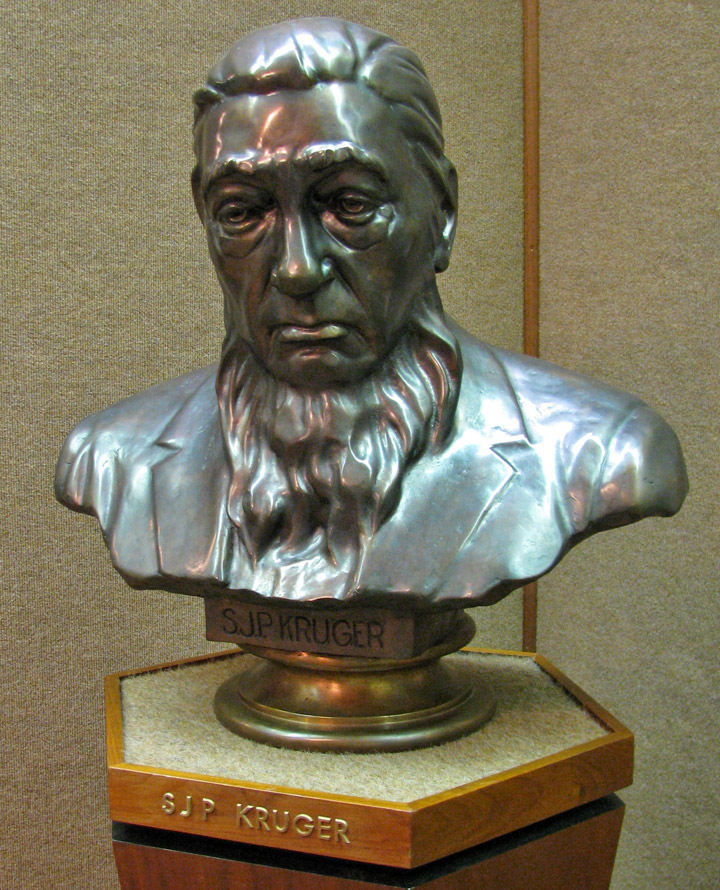
British administration officially renamed the reserves after Paul Kruger
Kruger National Park is the largest game reserve in South Africa. It is roughly the same size as Wales. It covers 18,989 square km (7,332 sq mi) and extends 350 km (217 mi) from north to south and 60 km (37 mi) from east to west.
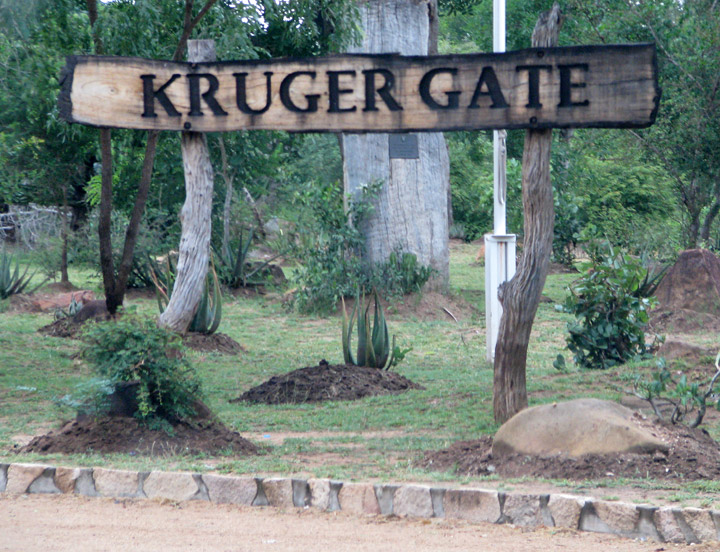
To the west and south of the Kruger National Park are the two South African
provinces of Mpumalanga and Limpopo. In the north is Zimbabwe, and to the east
is Mozambique. It is now part of the Great Limpopo Transfrontier Park, a peace
park that links Kruger National Park with the Gonarezhou National Park in
Zimbabwe, and with the Limpopo National Park in Mozambique.
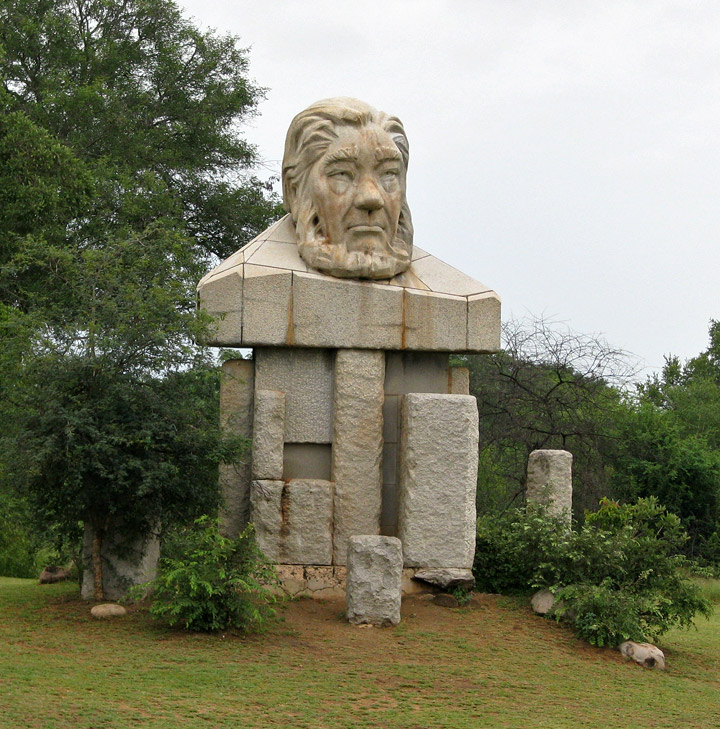
The park is part of the Kruger to Canyons Biosphere, an area designated by the
United Nations Education and Scientific Organisation (UNESCO) as an
International Man and Biosphere Reserve (the "Biosphere").
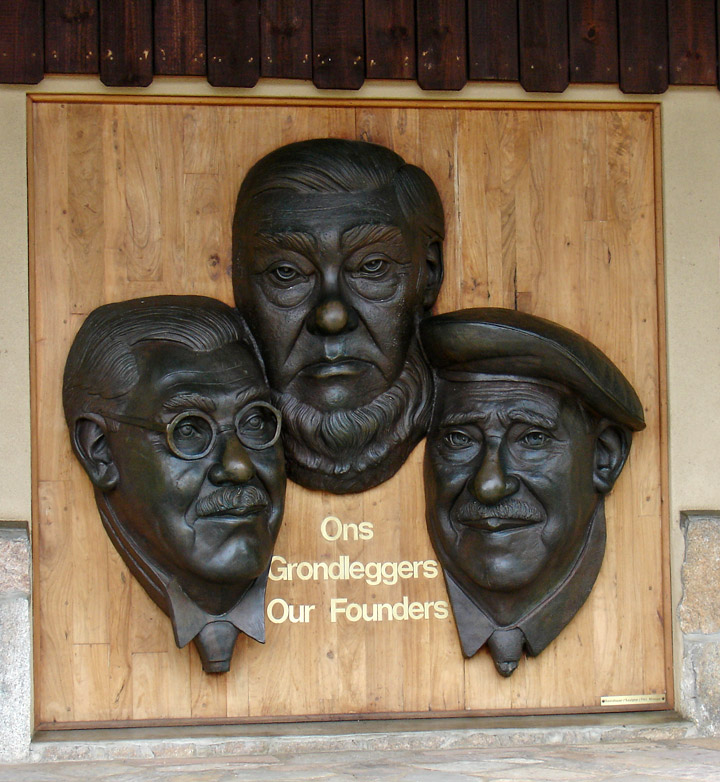
More Photos of the Skukuza Camp
Evidence of early humans is found in the area, dating as early as 1,500,000 BC.
The San people also existed in the area as far back as 100,000 BC. In AD 200,
the first Nguni speaking people, looking for more grazing land for their cattle,
migrated south into the area and displaced the San. By 800, the Arabs started
raiding the area for slaves, using the ports in Mozambique. Culture also sprang
up in the northern regions of the park. They built the Thulamela Stone Citadel
which was occupied between 1250–1700. They also extracted iron ore from up to
200 mines, converting it into iron for trade.

The first known European to explore the area was the Dutch Francois de Cuiper, who led a Dutch East India Company expedition from the Cape Colony in 1725. However, the expedition was attacked by local people near Gomondwane, and driven away.
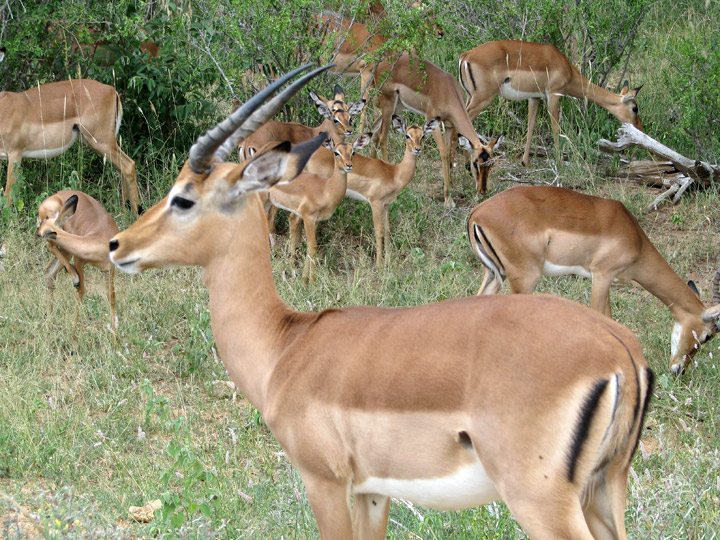
Around 1838, Voortrekker expeditions led by Louis Trichardt and Hans van
Rensburg explored the Lowveld. In 1845, João Albasini, an 18 year-old Portuguese
national of Italian birth, became the first European to settle in the area. He
was stranded in Mozambique and set off westward, where he built a homestead and
opened a trading store just north of modern day Pretoriuskop. About the same
time, wagon routes were established across the Lowveld linking the Transvaal
Republic to Delagoa Bay (Maputo).
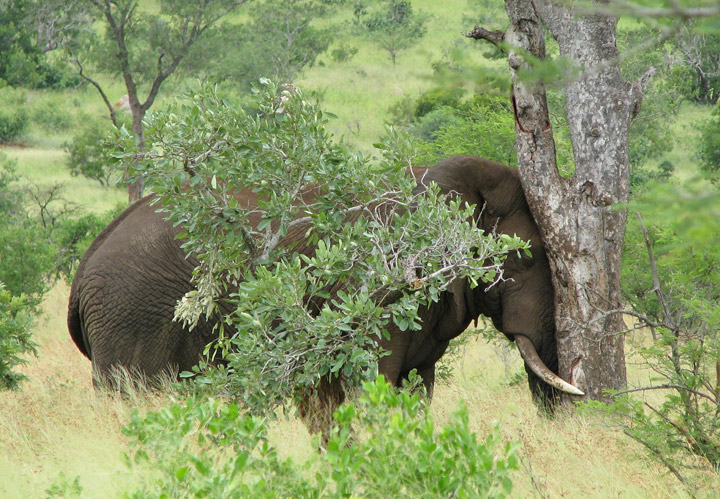
An Elephant pushes against a tree in the park.
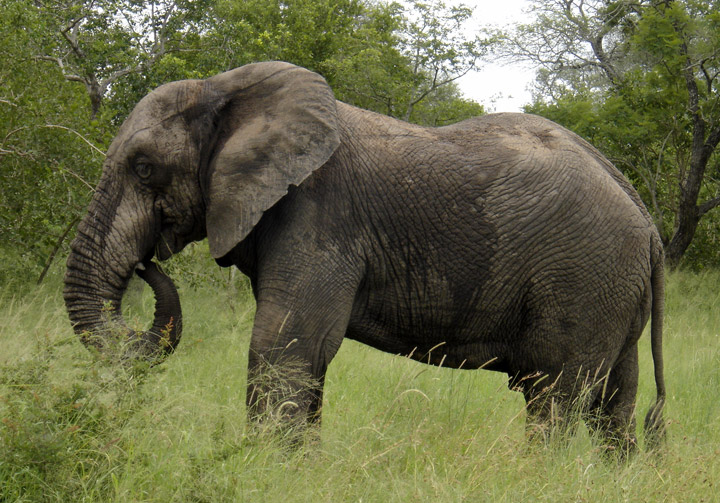
Gold was first discovered in September 1873 at Pilgrim's Rest, and then in 1881
at Barberton. Fortune seekers rushed to the lowveld, the prospect of finding
gold banished all fear of lions, crocodiles, and malaria. This started the
dramatic decline of wild animals in the region, due to hunting and trading of
animal horns and skins.
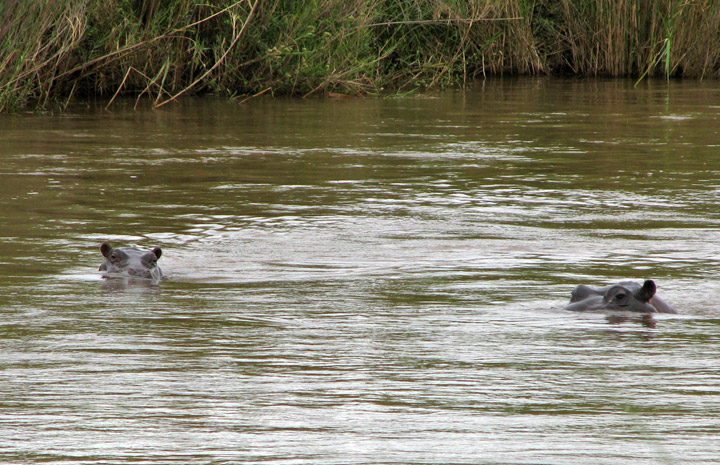
More Photos of the Hippopotamus
In 1896, the Rinderpest virus wiped out most of the region's game and cattle. Aiming to preserve game animals for future hunters, the Transvaal Volksraad voted in favour of a small government game reserve. Funds for the Sabie Game Reserve were allocated in 1898, but war broke out. After the Second Boer War, Major (later Lieutenant-Colonel) James Stevenson-Hamilton was appointed the first warden in 1902, and a few months later the area from the Sabi river to the Olifants river was added.
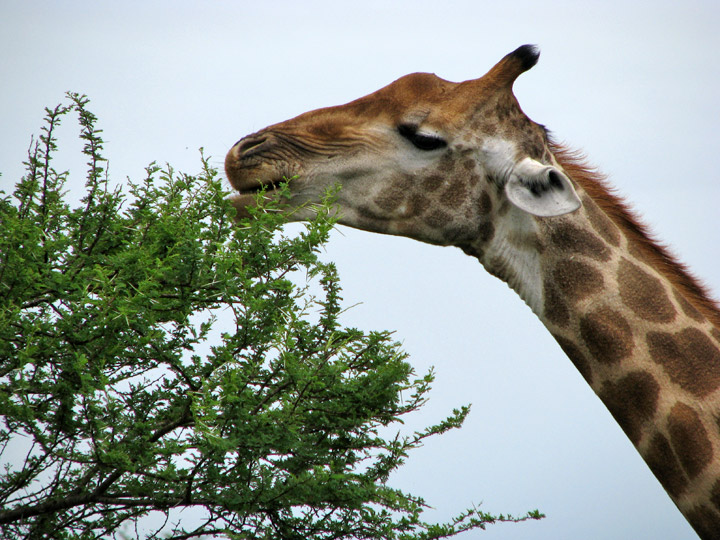
The far north area gained protection in 1903 as the Singwitsi Game Reserve. This area included Crook's Corner, a small triangular tongue of land between the Luvuvhu and Limpopo rivers, where the borders of Mozambique, South Africa and Zimbabwe meet. In the 1900s this area was a safe-haven for gun runners, poachers, fugitives and anyone else dodging the law. It was an easy hop across the river whenever police from one particular country approached. There is a large plaque here commemorating the legendary ivory hunter Cecil Barnard (Bvekenya), who hid on an island in the middle of the Limpopo to avoid being tracked down by pursuing rangers and police in the 1920s. Ironically, Barnard later became a ranger himself. A police station was later built here.
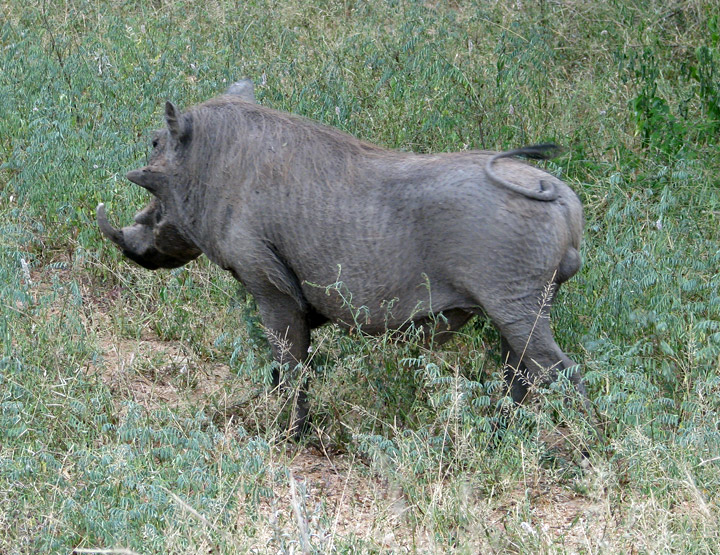
As a result of nearly a century of unbridled hunting, there were virtually no
animals in the reserves, and with the reputation of the malarial Lowveld as a
white man's grave, Stevenson-Hamilton removed all human inhabitants from the
reserves. In addition, he and his assistants began shooting all predators in
order to "bring up" the antelope herds.
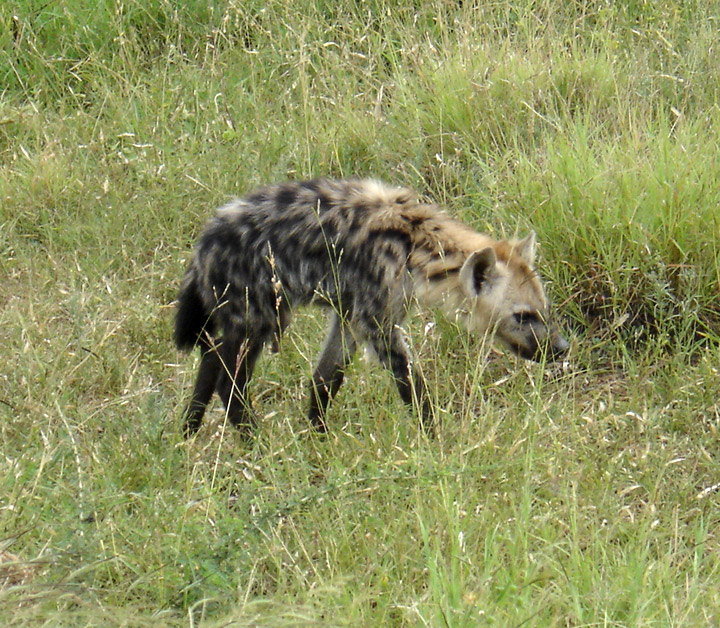
In 1912, a railway line was routed through the reserve. Stevenson-Hamilton successfully used this to get tourists to stop over for lunch. By 1916 a government commission was appointed to assess the future of the reserves. In 1926, as an act of reconciliation, the British administration officially renamed the reserves after Paul Kruger, and declared it to be South Africa's first National Park. In 1927, the park was opened to the public who where charged a £1 fee. Only a handful of cars visited the new park that year, but in 1935 some 26,000 people passed through the gates. Today the number is around 1.25 million per year. Stevenson-Hamilton was surprised when lions became a key attraction, and he stopped the indiscriminate shooting of the predators. Stevenson-Hamilton retired in 1946, and he died in 1957.

In the 1960s, in an effort to boost game numbers, the Water for Wildlife project was started and erected about 300 windmills in the park. The waterholes attracted game into the area. At first this seemed a good thing; only decades later did the results show that with the impalas and zebras the waterholes attracted also brought more predators into the area. Before the waterholes, these dryer areas supported roan antelope, which are much easier for lions to catch — the roans weren't able to compete. The park has started to close the waterholes, and let nature take its course.
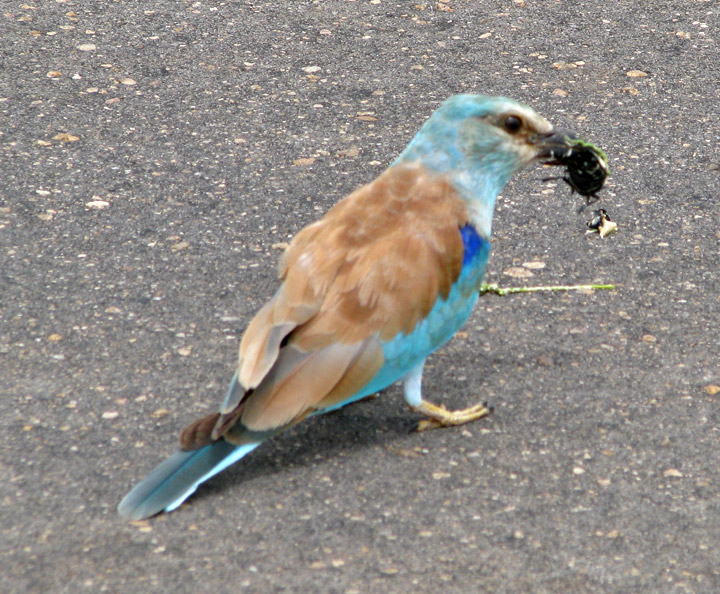
European Roller
In 1991, Robbie Robinson became Chief Executive Officer (CEO) of the South
African National Parks Board. Robinson began the transition of the park into the
new South Africa. One of his many accomplishments was removing the fencing that
separated the park's western border from numerous small, private game reserves,
thus allowing the animals to roam freely between the private game reserves and
Kruger National Park.
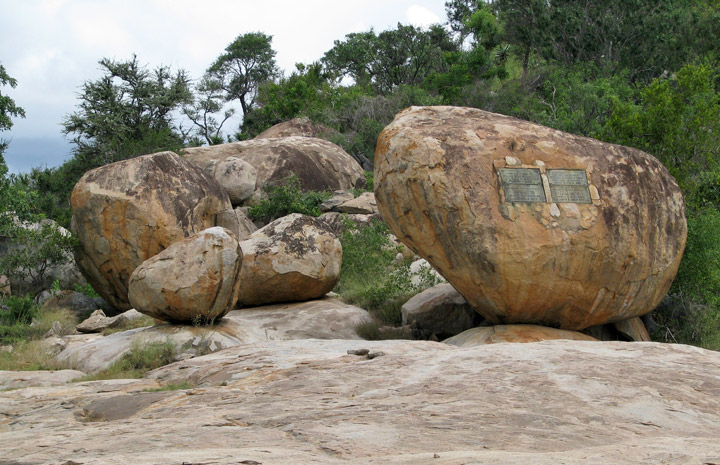

In 1998, the Kruger National Park's first black director was elected. David
Mabunda is now CEO of the South African National Parks Board.
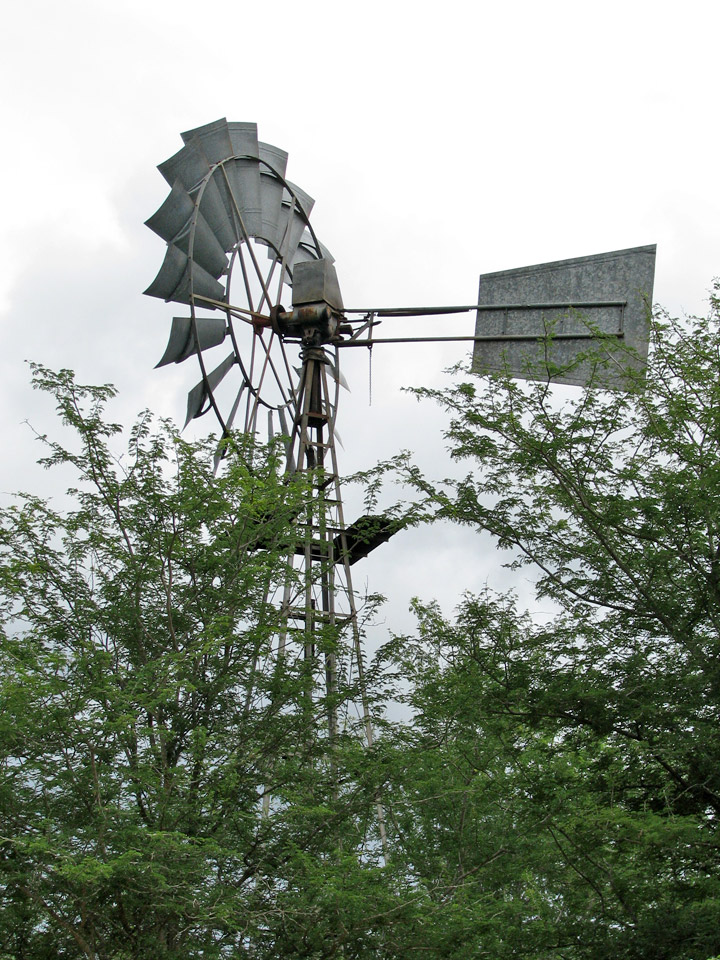
park windmill used to provide water to water holes
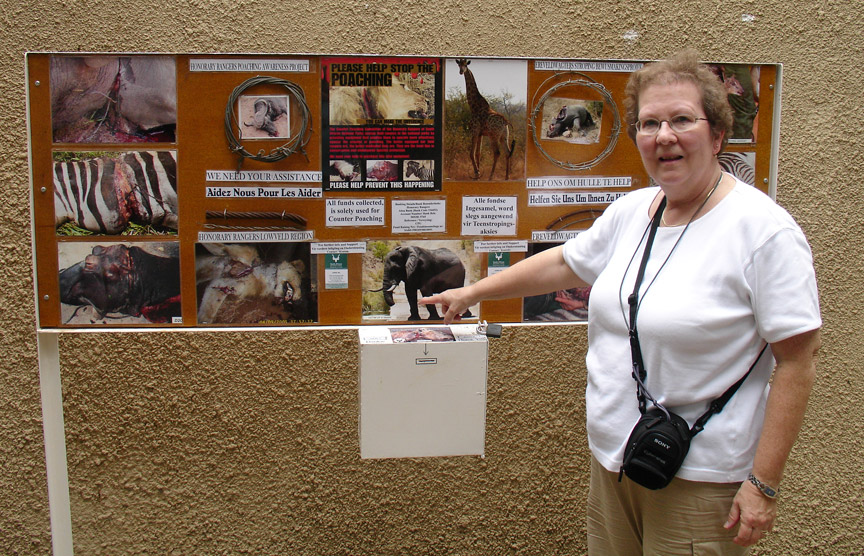
Ant-poaching poster
showing the damages to animals from the traps and snares
including the elephant which lost the end of his trunk
With the forming of the Great Limpopo Transfrontier Park, large, unsustainable herds of animals in the Kruger National Park can now be translocated to near-virgin bush. The war ravaged 300 km² Limpopo National Park in Mozambique (formerly known as Coutada 16) started receiving animals in 2001.
Text from Wikipedia
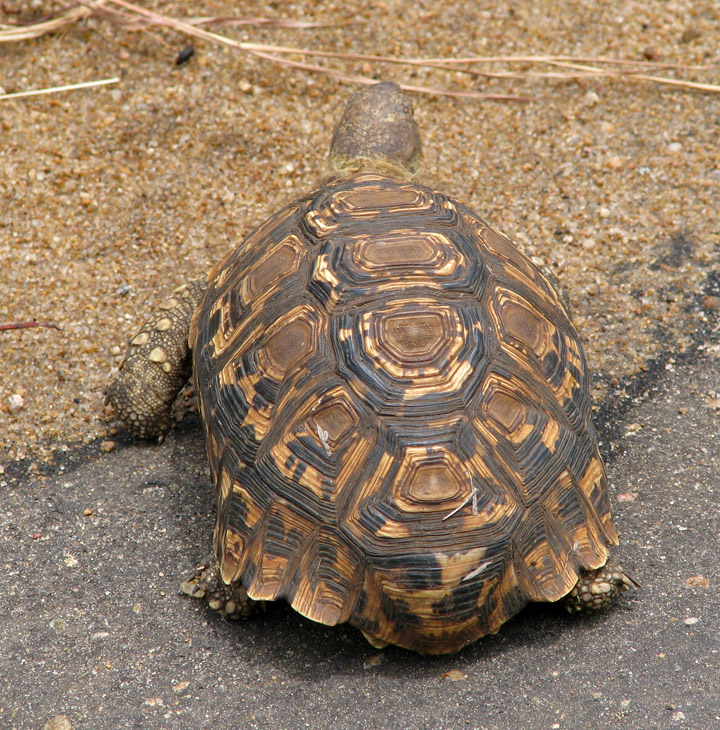
tortoise
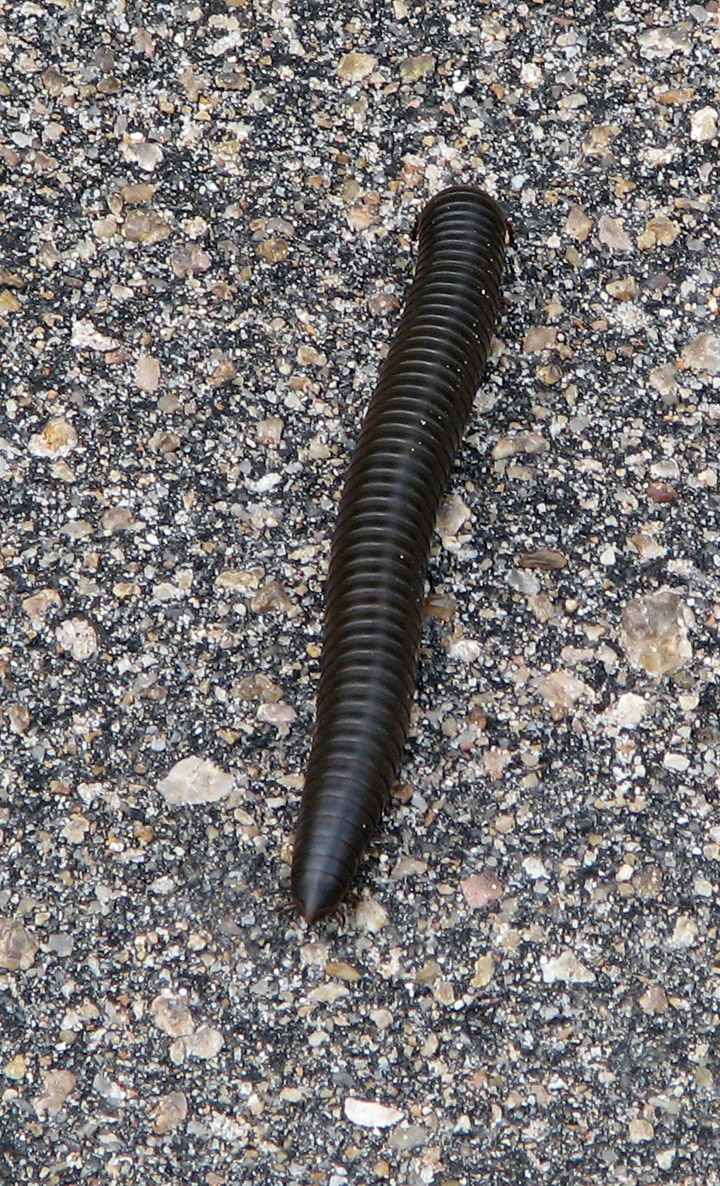
millipede
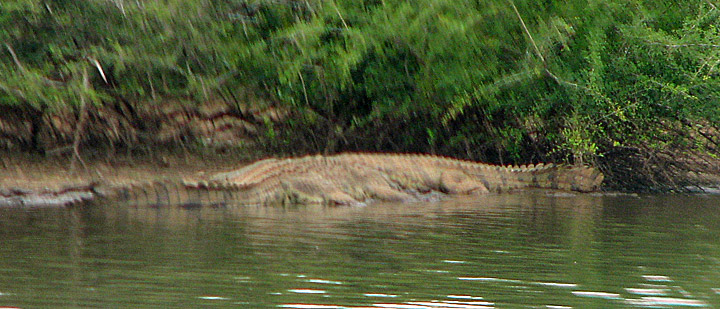
crocodiles
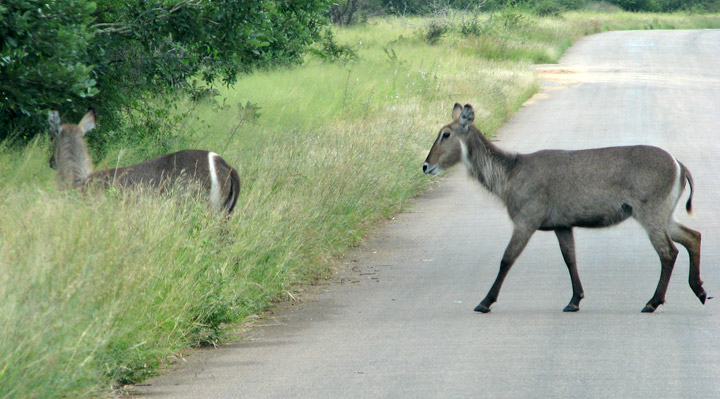
Water Buck
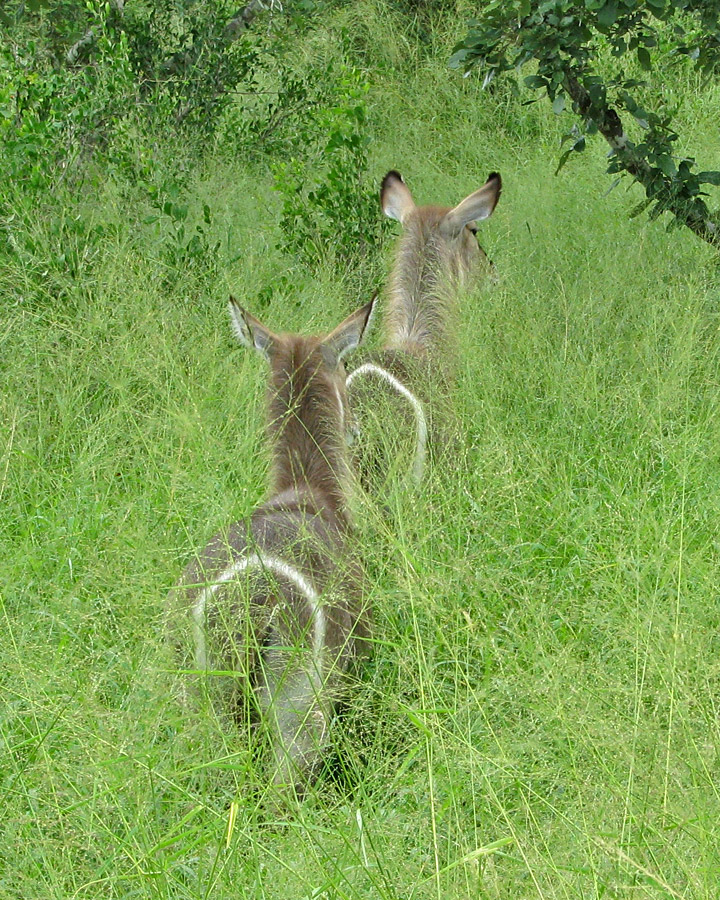
distinctive rump markings

female Kudu
Baboon

The baboon species are some of the largest non-hominid members of the primate order
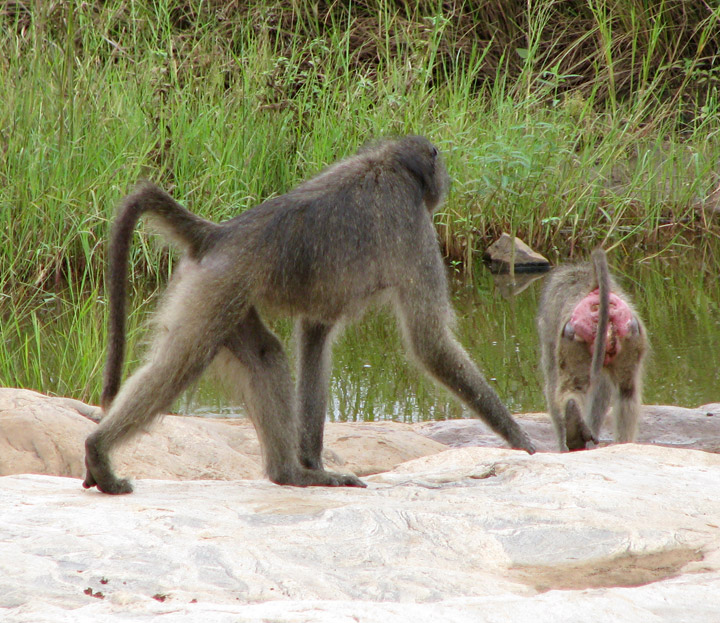
Baboons are terrestrial (ground dwelling) and are found in savanna, open woodland and hills across Africa. Their diet is omnivorous, but is usually vegetarian. They are foragers and are active at irregular times throughout the day and night. They can raid human dwellings and in South Africa they have been known to prey on sheep and goats.
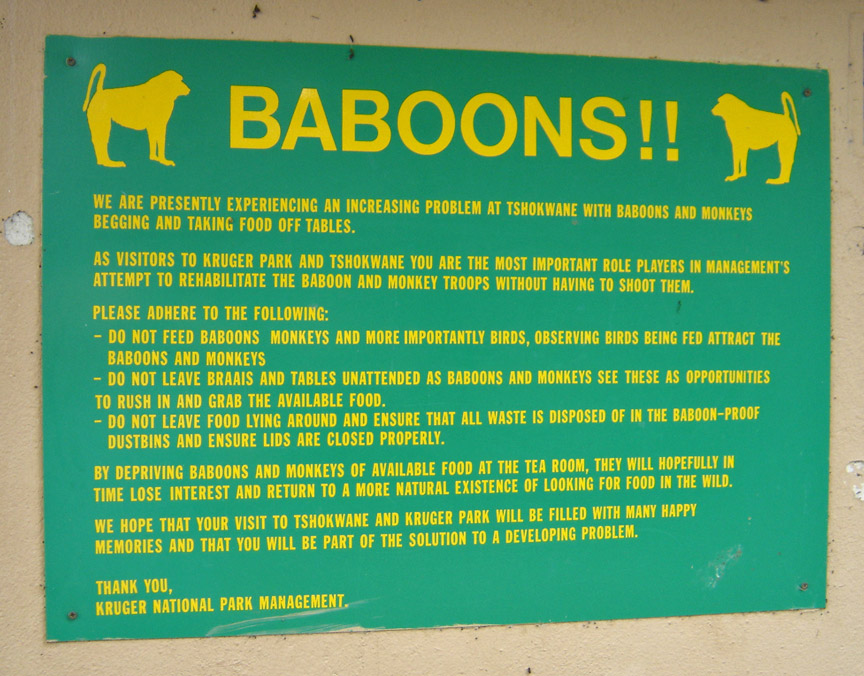
Klipspringer

The Klipspringer (literally "rock jumper" in Afrikaans), Oreotragus oreotragus, also known colloquially as a mvundla (from Xhosa "umvundla", meaning "rabbit"), is a small African antelope that lives from the Cape of Good Hope all the way up East Africa and into Ethiopia.
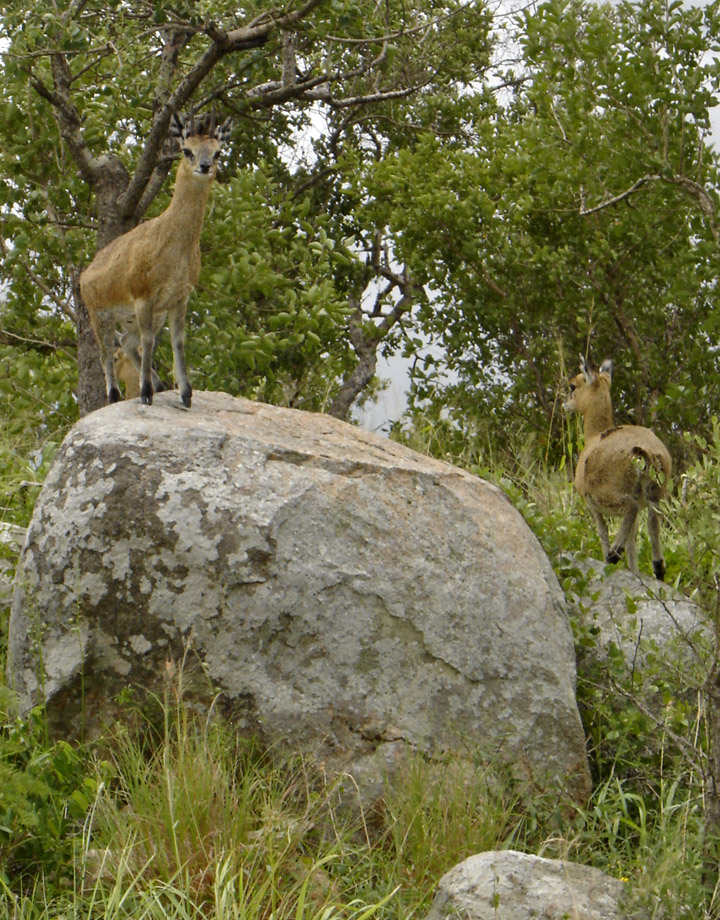
A pair of Klipspringers
Reaching approximately 58cm (22
inches) at the shoulder, Klipspringers are relatively small animals compared to
some of their larger antelope cousins. Only the males have horns that are
usually about 20-25cm (4-6 inches) long. They stand on the tips of their hooves.
With a thick and dense speckled "salt and pepper" patterned coat of an almost
olive shade, Klipspringers blend in well with the koppies (rock outcrops,
pronounced "copies") on which they can usually be found.
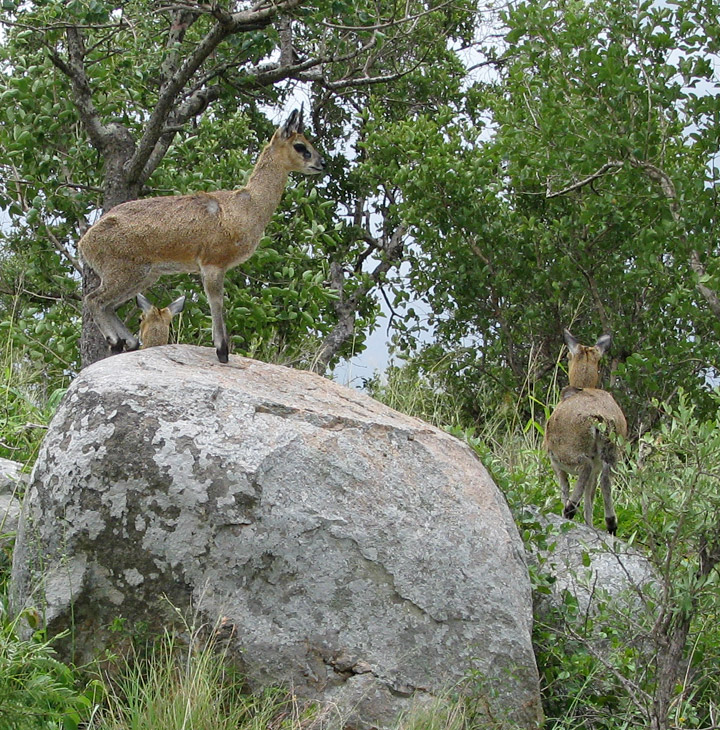
Klipspringers are herbivores, eating
rock plants. They never need to drink, since the succulents they subsist on
provide them with enough water to survive.
The mating season for Klipspringers is from September through to January. The
gestation period is about 214 days
Text from Wikipedia